Before the Korean National Para-Badminton Team departed for Beijing, Head Coach Kim Myo Jung spoke to Badzine about the Asian Para-Badminton Championships, next year’s Worlds in Korea, and the challenges facing her players from now until the Tokyo Paralympics and beyond.
Photos: Badmintonphoto and Don Hearn
This week, the best Para-Badminton players in Asia are in Beijing for the Asian Para-Badminton Championships. Before the Korean team boarded the plane bound for the Chinese capital, Badzine paid a special visit to the rolling hills of Icheon, where some of the world’s best players were training in a top-notch facility, the Korean Paralympic Committee’s National Training Centre.
In fact, when it comes to the wheelchair badminton, we can simply say the Koreans are the best. In the seven events at last years BWF World Para-Badminton Championships, the Koreans took home 4 golds, as well as 5 silvers and 3 bronze medals. At the Asian Para Games in Incheon a year earlier, 5 of the 6 golds went to Korean athletes.
A former elite player who was a team-mate to the likes of Olympic gold medallist Bang Soo Hyun, Head Coach Kim Myo Jung wrote the book on Para-Badminton…literally. It is entitled Basic Theory and Practice of Badminton for the Disabled and she co-wrote it with her former boss, Seo Myung Won of the Daekyo Group.
Kim first became a familiar face internationally as an international umpire adjudicating at some of the most prestigious world-class badminton events. Lately, though, Kim, has had to spend a lot less time off the high chair and down at court level. When she is not busy with her role as Head Coach of the National Para-Badminton Team, she also takes charge of several of the national team players at her Junggu Para-Badminton team in the south-eastern city of Ulsan.
With the Rio Games having ended and a new Paralympic cycle having begun, a whole lot is happening, both on this peninsula and elsewhere. The Koreans are working hard to maintain their wheelchair dominance even as athletes from other nations strive to come up to the same level. Korea’s standing athletes will also be looking to perform in Beijing as those categories become even more competitive that they already were.
In fact, Korea is looking to maintain the spotlight in ways that extend beyond the on-court performance, as the BWF World Para-Badminton Championships have just been awarded to Ulsan for 2017. The first BWF Para-Badminton Athlete of the Year, Lee Sam Seop, will be hoping to perform well in Beijing this week ahead of his attempted title defenses in no fewer than three categories next year at the Worlds.
Badzine: I don’t know how many athletes have access to a National Paralympic Training Centre. To what extent can your team make use of this facility?
Kim Myo Jung: They completed this facility in 2010 so we have been able to train here since then. Access to the centre differs depending on the sport so athletes in Paralympic medal events have a Class A rating and are entitled to 120 to 150 days at this training centre. Since Para-Badminton hasn’t been part of the Paralympics, we’ve been at Class C and could only train here for 60 days out of the year and the rest of the time, the four wheelchair athletes who are part of the Ulsan team I also coach, we would continue training there and then come here to train when it was our turn.
Badzine: After the Olympics, does the focus switch to the Asian Para Games, giving you more access?
Kim Myo Jung: Even in the two years between London and the Incheon Asian Para Games, we were permitted a slight increase in access but still not that much because of the status in the Paralympics. With the inclusion of Para-Badminton in the list for the Tokyo Paralympics, combined with the number of medals we won in Incheon and elsewhere, I’m hoping we will get boosted to Class A and might get to train here 130 to 150 days out of the year but that isn’t definite yet.
Badzine: Ulsan is also becoming something of a focal point. Was the bid to host the Worlds next year related to the fact that some top Para-Badminton athletes are based there?
Kim Myo Jung: Our Ulsan Junggu Badminton Team is of course affiliated with the city Sports Association for the Disabled and the team gets a lot of support. Also, in 2017, the City of Ulsan is celebrating 20 years since being designated a Metropolitan City so they were keen on hosting sporting events as part of the anniversary celebration.
Having a local wheelchair badminton team with world class players and wanting to put them in the spotlight was of course another big reason why the city was interested in bidding for the Para-Badminton Worlds in particular.
Badzine: With the support from Ulsan, how does the training environment compare with how you have it at the national centre?
Kim Myo Jung: The environment has changed a lot in Ulsan. Up until 2013, we only had use of one court for half a day so the rest of the time, the players had to do weight training and road work. In 2013, though, Ulsan opened a brand new Special Needs Gymnasium and it has things like weight training and shower facilities that can accommodate wheelchair athletes so conditions have really improved.
Badzine: What can your players expect at the Asian Championships in Beijing?
Kim Myo Jung: Even in the non-Para Badminton, China is the country with the most experience as a host. Of course there are still some things that are lacking but in particular with China, the Para-Badminton events are well staged.
Even back in 2010 when the Asian Para Games were in Guangzhou, the medal ceremonies and the way they set up the announcers, it was very similar to the non-Para sporting events. I think for the athletes, it really made them feel like they should as VIPs and as champions.
Badzine: And how about the medal contenders?
Kim Myo Jung: The men’s wheelchair team is of course the strongest but the women’s team, too, we usually count on having our athletes in the top four. China’s Wang Ping, ever since the Asian Para Games, it has been great having her in the competitions. Sujirat Pookkham of Thailand is also a very skilled player. We hope our women will make the semi-finals but to make the finals, we’ll have to see and then for mixed doubles as well, if our pairs can perform well, we could end up with four golds.
Badzine: And the standing events?
Kim Myo Jung: Our standing team unfortunately did not manage to get any medals in Incheon but Kim Jae Hoon did win bronze at the Worlds last year, as did our top men’s doubles pair Kim Gi Yeon and Shin Kyung Hwan in the SU5 division.
Badzine: Will the field be different? I know that the Incheon Games had a lot of players we hadn’t seen at the Asian Championships or the Worlds.
Kim Myo Jung: I think for China, because Para-Badminton was not a Paralympic sport, they weren’t as actively promoting in and only a few players were sent to the Worlds last year in England.
Last year, at the Beijing Open, there were more wheelchair badminton players that I hadn’t seen before and I wonder if that was a result of it becoming a Paralympic event. In the future, what with China having such a huge population and badminton being a popular sport there generally, we’re going to keep seeing a lot more younger players from there.
Badzine: These Para-Badminton Opens are something relatively new. Wasn’t Korea planning to host one, too?
Kim Myo Jung: Korea was planning to host a Para-Badminton Open event a few years ago when Seo Myung Won of Daekyo was the President of the Asian Para-Badminton Confederation. It was to be held in Chungju and the budget was being arranged for it but there were some internal problems and it really needed someone to keep working hard at it and when President Seo resigned, the plans for the Open tournament fell through.
In the future, there may be something that can be done for an annual tournament in Ulsan. There has been a lot of support from the city and this year a national tournament was held there so considering we have top players based there, it may well happen in the future but we’ll have to see.
Badzine: We’ve seen some changes now that Para-Badminton has come under the purview of the Badminton World Federation (BWF). Has a parallel change happened within Korea, administratively?
Kim Myo Jung: A lot of consolidation has happened within the BWF. Not only is the former IBAD now under the auspices of the BWF but even the rulebook now includes the laws of Para-Badminton in the same document as the Laws of Badminton.
In Korea, there is a different amalgamation going on so the federations for elite sport and recreational have always been separate but now they are combining and the same is happening for Para-Badminton, where we have event had domestic tournaments with both elite Para-Badminton players and those who play recreationally.
Badzine: Para-badminton has some star veterans who have been waiting a long time for their sport to become a Paralympic medal event. Are the top names likely to remain until Tokyo?
Kim Myo Jung: Our Korean wheelchair players are no longer so young and are very experienced and they are at the pinnacle but we all know we have to groom a new generation but quite likely in a few years, the international field is going to be more level as the skill level in the other teams comes up.
Similarly, Cheah Liek Hou in Malaysia is a very good player in his standing catergory and his shot-making is reminiscent of world-class non-Para badminton players, whom he has trained with. There are many young Indonesians in the standing events and at the Indonesian Open a couple of years ago one of them beat Cheah. He doesn’t quite have the fitness he once did and he still has an edge but in a few years, as the young Indonesians improve, some of them will be able to challenge him more.
In Korea, we are working on grooming several players who are under 30 but it’s not easy to find interesting among younger athletes. That’s not limited to badminton but badminton is a physically difficult sport to play and you have to keep working at it to become better so attracting new recruits is something we’ve been struggling with.
We know that after this first generation has played in the 2020 Paralympics, a lot of them are between 40 and 50 now and there has to be a new group coming up but it looks as if it could be quite difficult.
When we look at the teams abroad, they have younger players but it takes a lot of concentration and you have to learn to be a wheelchair athlete and to play badminton. Players from abroad have seen that the Korean wheelchair athletes seem to play at a high level and they want to come and do some training camp so we are getting involved in that kind of exchange, too.
We’ve had groups from England, Germany, and Hong Kong over for a week to ten days but it’s not just a question of foreign athletes coming here and learning from us and then being able to beat our players in the future. It’s always a reciprocal arrangement.
Of course, our players get to train with many different athletes but also, even just the international exchange aspect is valuable. For example, our players are not very strong in English but that is one thing they are exposed to when players come from overseas. If you want to be an international athlete, you have to be able to communicate and to give interviews so that is not insignificant. The players have to train but they also need the cultural experience.
![Korea’s Para-Badminton World Champions ready for Asia Before the Korean National Para-Badminton Team departed for Beijing, Head Coach Kim Myo Jung spoke to Badzine about the Asian Para-Badminton Championships, next year’s Worlds in Korea, and the challenges […]](http://www.badzine.net/wp-content/uploads/ngg_featured/IU5G9831_rotator.jpg)
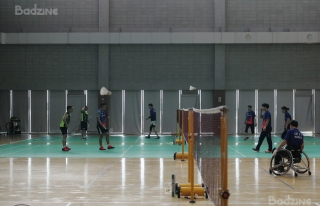
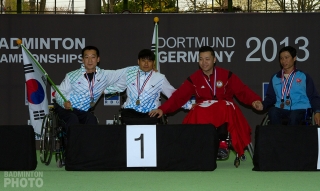
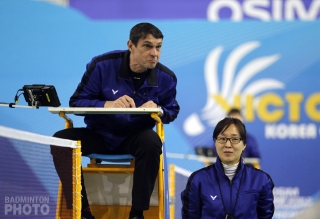
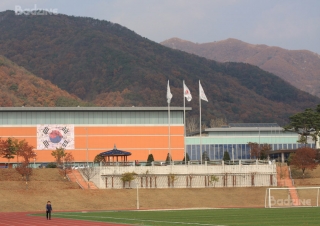
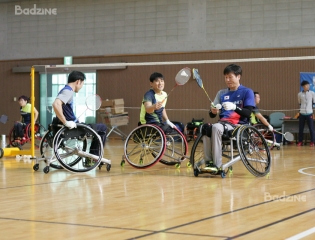
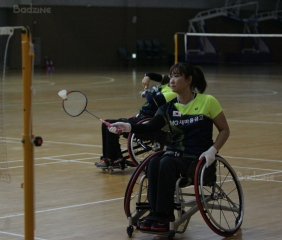
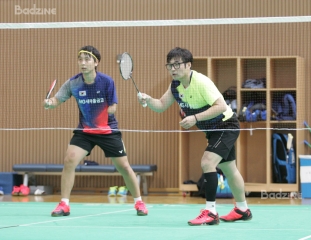
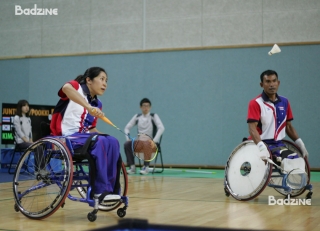
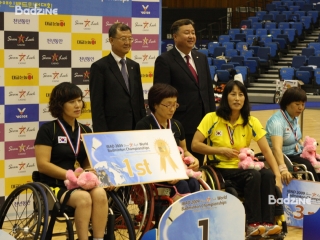
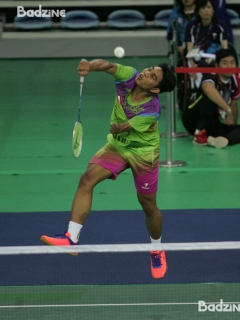
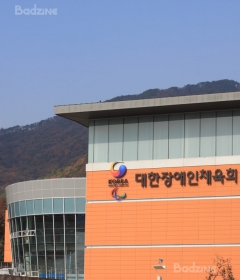
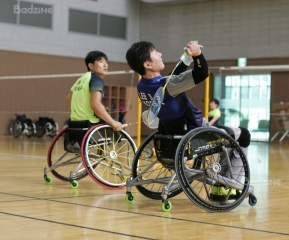

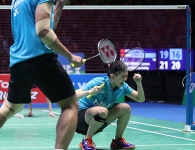
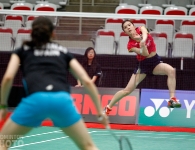
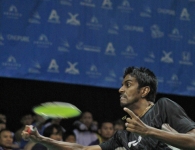
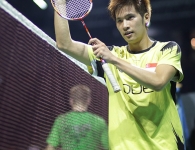
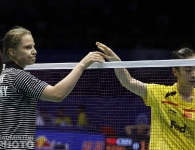
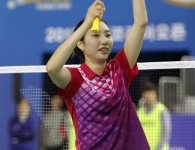
Leave a Reply